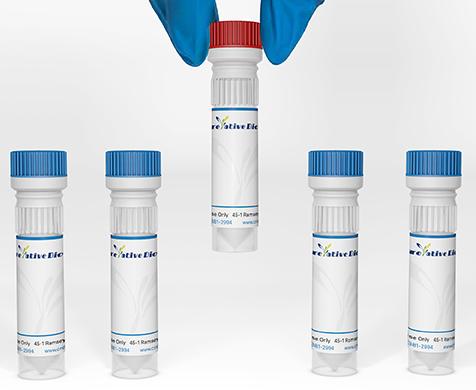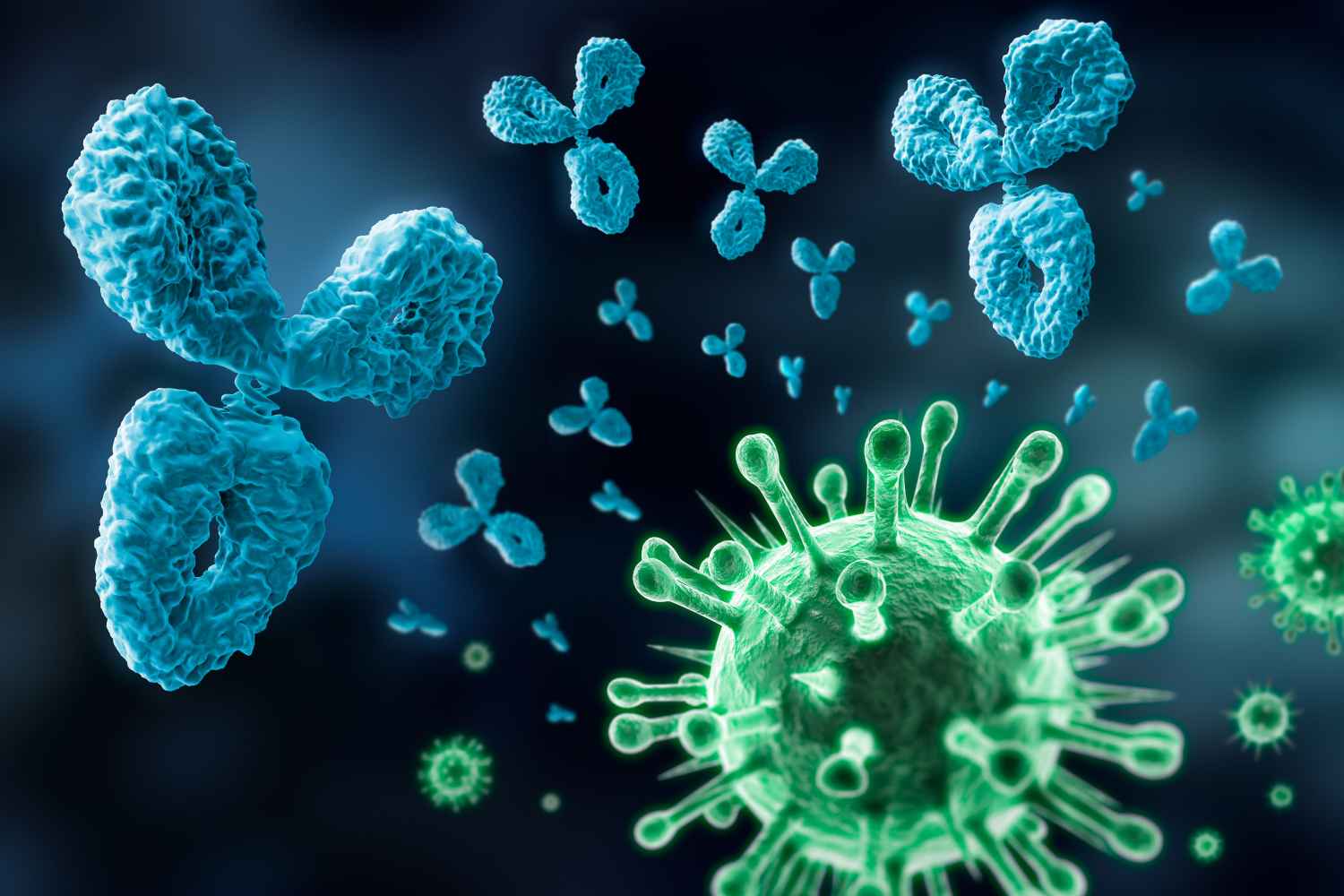MYOCD
This gene encodes a nuclear protein, which is expressed in heart, aorta, and in smooth muscle cell-containing tissues. It functions as a transcriptional co-activator of serum response factor (SRF) and modulates expression of cardiac and smooth muscle-specific SRF-target genes, and thus may play a crucial role in cardiogenesis and differentiation of the smooth muscle cell lineage. Alternatively spliced transcript variants encoding different isoforms have been found for this gene.
Full Name
MYOCARDIN
Function
Smooth muscle cells (SM) and cardiac muscle cells-specific transcriptional factor which uses the canonical single or multiple CArG boxes DNA sequence. Acts as a cofactor of serum response factor (SRF) with the potential to modulate SRF-target genes. Plays a crucial role in cardiogenesis, urinary bladder development, and differentiation of the smooth muscle cell lineage (myogenesis) (By similarity).
Biological Process
Cardiac muscle cell differentiation Source: BHF-UCL
Cardiac ventricle development Source: Ensembl
Cardiocyte differentiation Source: UniProtKB
Cellular component maintenance Source: Ensembl
Digestive tract development Source: Ensembl
Ductus arteriosus closure Source: Ensembl
Lung alveolus development Source: Ensembl
Negative regulation of amyloid-beta clearance Source: BHF-UCL
Negative regulation of cardiac muscle cell apoptotic process Source: Ensembl
Negative regulation of cell adhesion molecule production Source: Ensembl
Negative regulation of cell population proliferation Source: BHF-UCL
Negative regulation of cyclin-dependent protein serine/threonine kinase activity Source: BHF-UCL
Negative regulation of myotube differentiation Source: Ensembl
Negative regulation of platelet-derived growth factor receptor-beta signaling pathway Source: Ensembl
Negative regulation of skeletal muscle cell differentiation Source: BHF-UCL
Negative regulation of transcription by RNA polymerase II Source: Ensembl
Negative regulation of vascular associated smooth muscle cell migration Source: Ensembl
Negative regulation of vascular associated smooth muscle cell proliferation Source: Ensembl
Positive regulation of cardiac muscle cell differentiation Source: BHF-UCL
Positive regulation of cardiac vascular smooth muscle cell differentiation Source: BHF-UCL
Positive regulation of cell population proliferation Source: Ensembl
Positive regulation of DNA binding Source: Ensembl
Positive regulation of DNA-binding transcription factor activity Source: BHF-UCL
Positive regulation of gene expression Source: Ensembl
Positive regulation of miRNA transcription Source: Ensembl
Positive regulation of smooth muscle cell differentiation Source: BHF-UCL
Positive regulation of smooth muscle contraction Source: BHF-UCL
Positive regulation of transcription, DNA-templated Source: UniProtKB
Positive regulation of transcription by RNA polymerase II Source: BHF-UCL
Positive regulation of transcription from RNA polymerase II promoter involved in myocardial precursor cell differentiation Source: BHF-UCL
Positive regulation of transcription from RNA polymerase II promoter involved in smooth muscle cell differentiation Source: BHF-UCL
Positive regulation of transforming growth factor beta receptor signaling pathway Source: Ensembl
Regulation of cell growth by extracellular stimulus Source: Ensembl
Regulation of histone acetylation Source: UniProtKB
Regulation of myoblast differentiation Source: Ensembl
Regulation of phenotypic switching Source: Ensembl
Regulation of smooth muscle cell differentiation Source: BHF-UCL
Response to hypoxia Source: BHF-UCL
Smooth muscle cell differentiation Source: BHF-UCL
Urinary bladder development Source: UniProtKB
Uterus development Source: Ensembl
Vascular associated smooth muscle cell differentiation Source: Ensembl
Vasculogenesis Source: Ensembl
Ventricular cardiac muscle cell differentiation Source: Ensembl
Cardiac ventricle development Source: Ensembl
Cardiocyte differentiation Source: UniProtKB
Cellular component maintenance Source: Ensembl
Digestive tract development Source: Ensembl
Ductus arteriosus closure Source: Ensembl
Lung alveolus development Source: Ensembl
Negative regulation of amyloid-beta clearance Source: BHF-UCL
Negative regulation of cardiac muscle cell apoptotic process Source: Ensembl
Negative regulation of cell adhesion molecule production Source: Ensembl
Negative regulation of cell population proliferation Source: BHF-UCL
Negative regulation of cyclin-dependent protein serine/threonine kinase activity Source: BHF-UCL
Negative regulation of myotube differentiation Source: Ensembl
Negative regulation of platelet-derived growth factor receptor-beta signaling pathway Source: Ensembl
Negative regulation of skeletal muscle cell differentiation Source: BHF-UCL
Negative regulation of transcription by RNA polymerase II Source: Ensembl
Negative regulation of vascular associated smooth muscle cell migration Source: Ensembl
Negative regulation of vascular associated smooth muscle cell proliferation Source: Ensembl
Positive regulation of cardiac muscle cell differentiation Source: BHF-UCL
Positive regulation of cardiac vascular smooth muscle cell differentiation Source: BHF-UCL
Positive regulation of cell population proliferation Source: Ensembl
Positive regulation of DNA binding Source: Ensembl
Positive regulation of DNA-binding transcription factor activity Source: BHF-UCL
Positive regulation of gene expression Source: Ensembl
Positive regulation of miRNA transcription Source: Ensembl
Positive regulation of smooth muscle cell differentiation Source: BHF-UCL
Positive regulation of smooth muscle contraction Source: BHF-UCL
Positive regulation of transcription, DNA-templated Source: UniProtKB
Positive regulation of transcription by RNA polymerase II Source: BHF-UCL
Positive regulation of transcription from RNA polymerase II promoter involved in myocardial precursor cell differentiation Source: BHF-UCL
Positive regulation of transcription from RNA polymerase II promoter involved in smooth muscle cell differentiation Source: BHF-UCL
Positive regulation of transforming growth factor beta receptor signaling pathway Source: Ensembl
Regulation of cell growth by extracellular stimulus Source: Ensembl
Regulation of histone acetylation Source: UniProtKB
Regulation of myoblast differentiation Source: Ensembl
Regulation of phenotypic switching Source: Ensembl
Regulation of smooth muscle cell differentiation Source: BHF-UCL
Response to hypoxia Source: BHF-UCL
Smooth muscle cell differentiation Source: BHF-UCL
Urinary bladder development Source: UniProtKB
Uterus development Source: Ensembl
Vascular associated smooth muscle cell differentiation Source: Ensembl
Vasculogenesis Source: Ensembl
Ventricular cardiac muscle cell differentiation Source: Ensembl
Cellular Location
Nucleus
Involvement in disease
Megabladder, congenital (MGBL):
An autosomal dominant congenital anomaly characterized by a massively dilated urinary bladder with disrupted smooth muscle in the bladder wall. MGBL is a sex-limited trait with 95% male predominance, and incomplete penetrance. Affected males frequently die in utero.
An autosomal dominant congenital anomaly characterized by a massively dilated urinary bladder with disrupted smooth muscle in the bladder wall. MGBL is a sex-limited trait with 95% male predominance, and incomplete penetrance. Affected males frequently die in utero.
PTM
Phosphorylation regulates negatively the intrinsic myocardin transcriptional activity.
View more
Anti-MYOCD antibodies
+ Filters
 Loading...
Loading...
Target: MYOCD
Host: Mouse
Antibody Isotype: IgG2b
Specificity: Human, Mouse
Clone: CBFYM-2999
Application*: WB
More Infomation
Hot products 
-
Mouse Anti-ALOX5 Recombinant Antibody (33) (CBMAB-1890CQ)

-
Mouse Anti-8-oxoguanine Recombinant Antibody (V2-7719) (CBMAB-1898CQ)

-
Rabbit Anti-BAD (Phospho-Ser136) Recombinant Antibody (CAP219) (CBMAB-AP536LY)

-
Mouse Anti-BLK Recombinant Antibody (CBYY-0618) (CBMAB-0621-YY)

-
Mouse Anti-AAV-5 Recombinant Antibody (V2-503417) (CBMAB-V208-1369-FY)

-
Mouse Anti-DLC1 Recombinant Antibody (D1009) (CBMAB-D1009-YC)

-
Mouse Anti-BLNK Recombinant Antibody (CBYY-0623) (CBMAB-0626-YY)

-
Mouse Anti-BIRC3 Recombinant Antibody (315304) (CBMAB-1214-CN)

-
Armenian hamster Anti-CD40 Recombinant Antibody (HM40-3) (CBMAB-C10365-LY)

-
Mouse Anti-APOA1 Monoclonal Antibody (CBFYR0637) (CBMAB-R0637-FY)

-
Mouse Anti-BANF1 Recombinant Antibody (3F10-4G12) (CBMAB-A0707-LY)

-
Mouse Anti-CRTAM Recombinant Antibody (CBFYC-2235) (CBMAB-C2305-FY)

-
Mouse Anti-AKR1C3 Recombinant Antibody (V2-12560) (CBMAB-1050-CN)

-
Mouse Anti-CCND2 Recombinant Antibody (DCS-3) (CBMAB-G1318-LY)

-
Mouse Anti-CTNND1 Recombinant Antibody (CBFYC-2414) (CBMAB-C2487-FY)

-
Mouse Anti-ADAM12 Recombinant Antibody (V2-179752) (CBMAB-A1114-YC)

-
Mouse Anti-ARHGDIA Recombinant Antibody (CBCNA-009) (CBMAB-R0415-CN)

-
Mouse Anti-HTLV-1 gp46 Recombinant Antibody (CBMW-H1006) (CBMAB-V208-1154-FY)

-
Mouse Anti-ALB Recombinant Antibody (V2-180650) (CBMAB-A2186-YC)

-
Mouse Anti-CECR2 Recombinant Antibody (CBWJC-2465) (CBMAB-C3533WJ)

For Research Use Only. Not For Clinical Use.
(P): Predicted
* Abbreviations
- AActivation
- AGAgonist
- APApoptosis
- BBlocking
- BABioassay
- BIBioimaging
- CImmunohistochemistry-Frozen Sections
- CIChromatin Immunoprecipitation
- CTCytotoxicity
- CSCostimulation
- DDepletion
- DBDot Blot
- EELISA
- ECELISA(Cap)
- EDELISA(Det)
- ESELISpot
- EMElectron Microscopy
- FFlow Cytometry
- FNFunction Assay
- GSGel Supershift
- IInhibition
- IAEnzyme Immunoassay
- ICImmunocytochemistry
- IDImmunodiffusion
- IEImmunoelectrophoresis
- IFImmunofluorescence
- IHImmunohistochemistry
- IMImmunomicroscopy
- IOImmunoassay
- IPImmunoprecipitation
- ISIntracellular Staining for Flow Cytometry
- LALuminex Assay
- LFLateral Flow Immunoassay
- MMicroarray
- MCMass Cytometry/CyTOF
- MDMeDIP
- MSElectrophoretic Mobility Shift Assay
- NNeutralization
- PImmunohistologyp-Paraffin Sections
- PAPeptide Array
- PEPeptide ELISA
- PLProximity Ligation Assay
- RRadioimmunoassay
- SStimulation
- SESandwich ELISA
- SHIn situ hybridization
- TCTissue Culture
- WBWestern Blot

Online Inquiry





